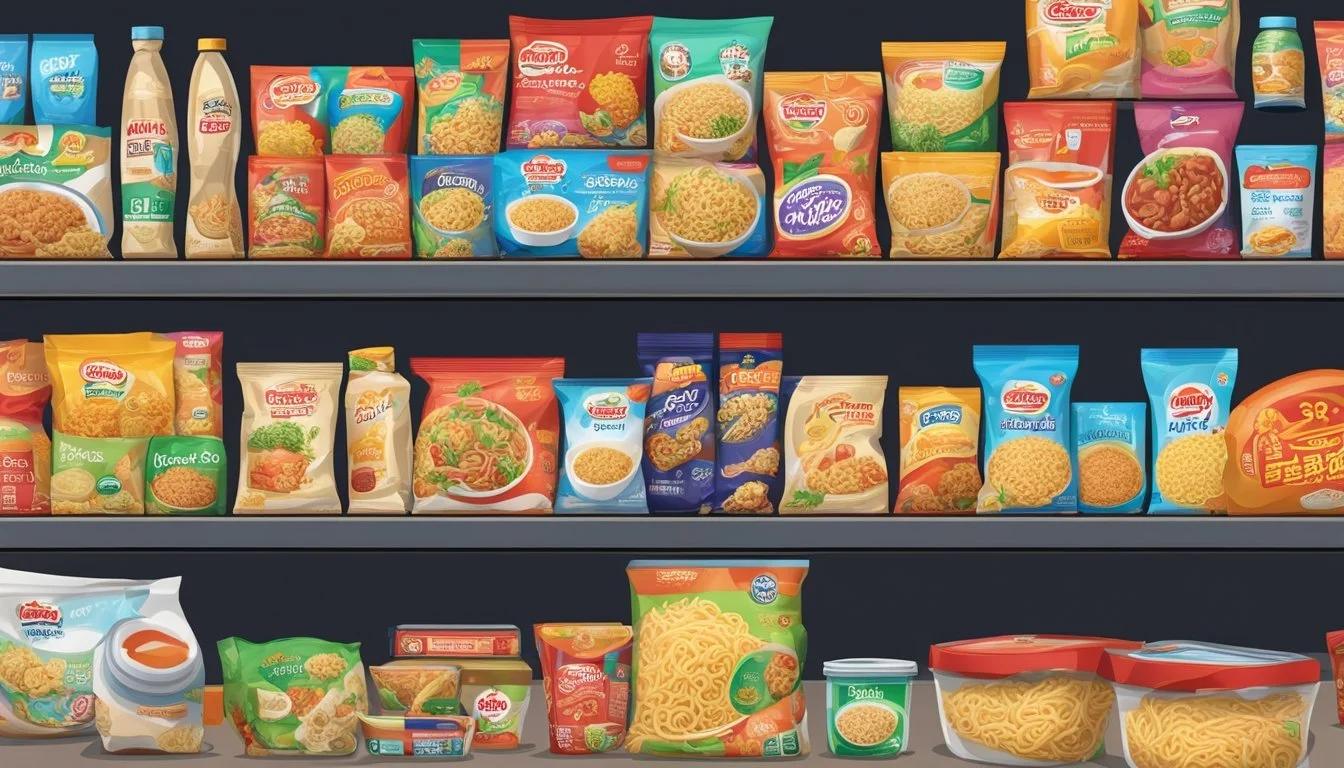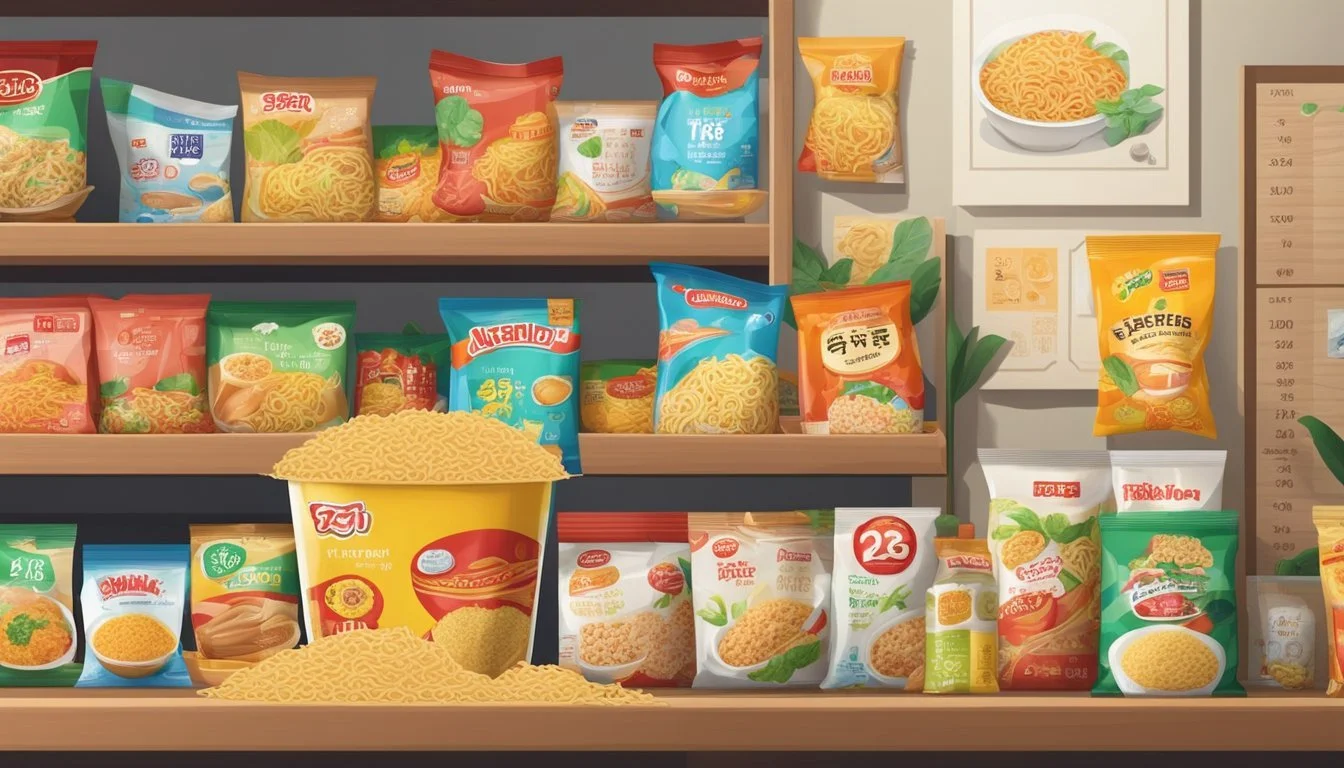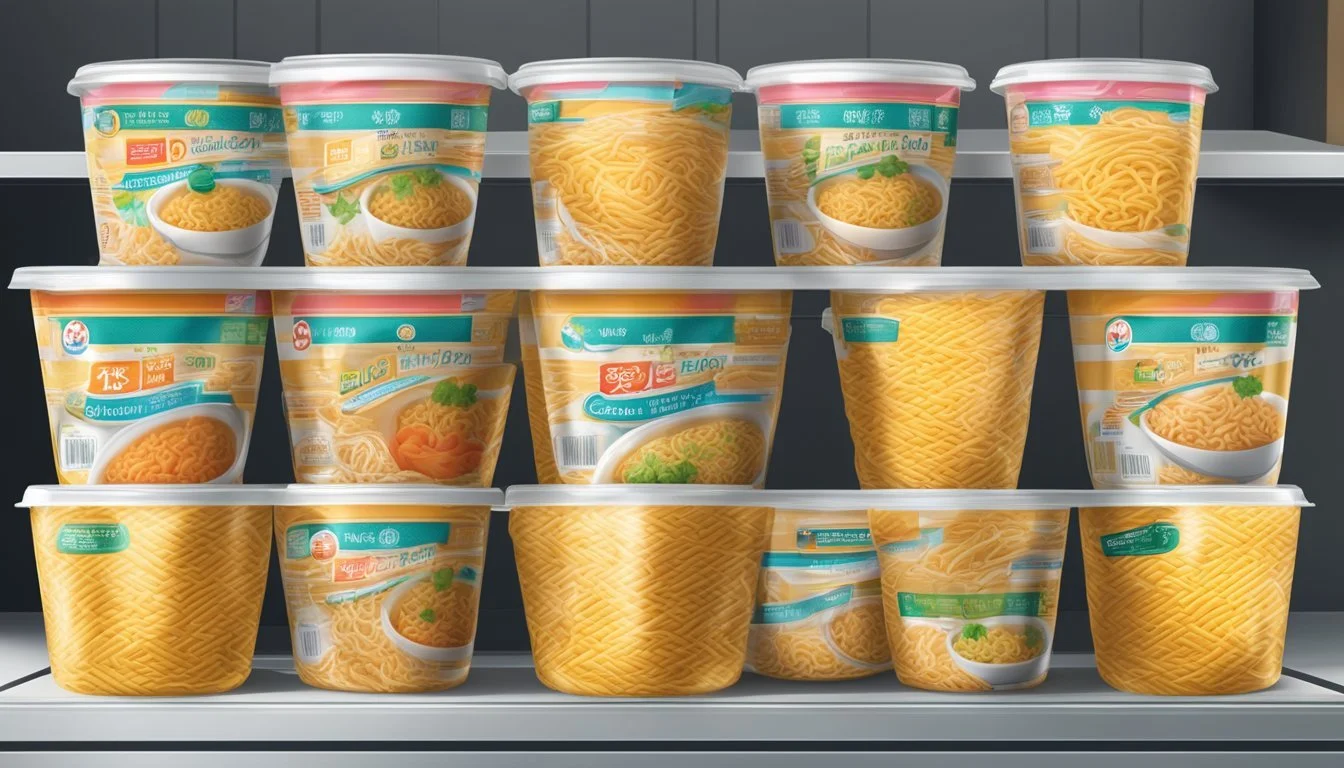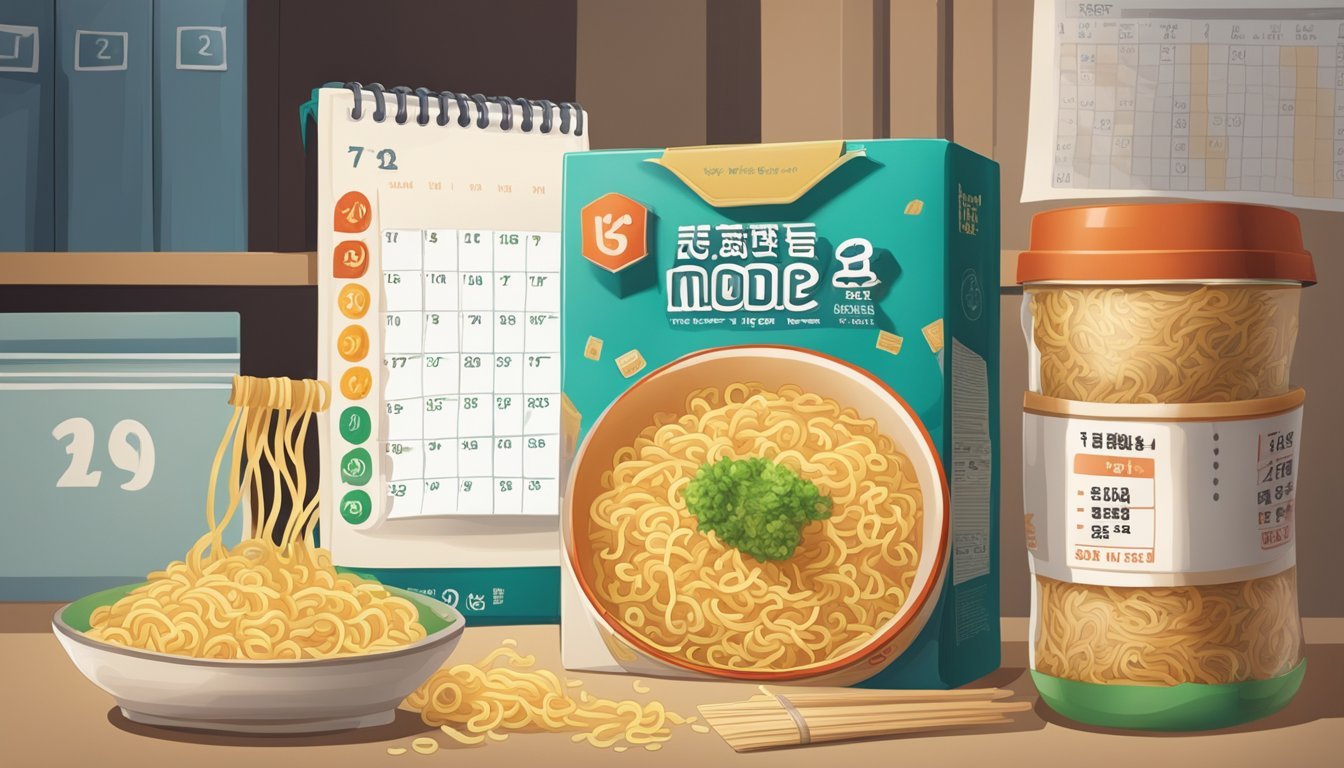How Long Do Instant Noodles Last?
Unveiling Shelf Life and Storage Tips
Instant noodles (how long do instant noodles last?), a pantry staple known for their convenience and long shelf life, do indeed have an expiration date that consumers should be mindful of. The shelf life of these packaged noodles typically extends beyond the date printed on the package, but this does not mean they last indefinitely. It's generally accepted that instant noodles can remain safe to eat for a considerable time post-expiration if they are stored properly - which is cool and dry conditions.
The period for which they retain their quality varies, with estimates ranging from a couple of months to as many as 18 months past the indicated date. The key factors affecting their longevity include the type of noodles, the packaging material, and the storage environment. Consumers can usually rely on their senses to assess the noodles' condition; noodles past their prime may lose their flavor and, in some cases, take on an unpleasant taste or odor.
Overview of Instant Noodles
Instant noodles are an essential staple in many households worldwide due to their affordability and ease of preparation. These quick-cooking noodle dishes serve as a swift meal or snack perfect for various occasions.
What Are Instant Noodles?
Instant noodles are a pre-cooked and dried noodle block, often accompanied by a flavoring powder or sauce. They're typically made from wheat flour, palm oil, and salt and can be found in various shapes and packaging types. Instant noodles can be broken down into different categories based on their preparation methods and packaging:
Bagged Noodles: Usually require boiling and adding flavoring
Cup or Bowl Noodles: Convenient for on-the-go consumption, needing only hot water
Ramen: A well-known Japanese-style instant noodle, often rich in flavor with multiple seasoning packets
Popularity and Types
Instant noodles have soared in popularity due to their convenience, long shelf life, and affordability. They come in an array of flavors, catering to diverse tastes and preferences. While considered a quick and easy option, instant noodles have transformed into a culinary canvas with the following common types found globally:
Seafood: Shrimp, fish cake flavorings
Chicken: Often mimicking classic broth-based chicken noodle soup
Beef: Rich, hearty flavor profiles similar to beef stew (What wine goes well with beef stew?)
Spicy: Varieties include hot chili peppers and other piquant seasonings
Vegetarian: Options without meat derivatives, sometimes including dehydrated vegetable packets
Instant noodles' adaptability allows them to be tailored further with additional toppings, such as eggs, vegetables, or proteins, turning a simple snack into a more complete meal.
Shelf Life Determinants
The shelf life of instant noodles is impacted by various factors that govern how long they remain suitable for consumption. These factors include the manufacturing process, the types and amounts of preservatives and ingredients used, as well as the packaging methods employed.
Manufacturing Process
The method by which instant noodles are produced plays a significant role in their shelf life. High-temperature frying or drying processes are commonly used, which reduce the moisture content in the noodles. Lower moisture levels inhibit bacterial growth, thus extending the shelf life. Companies often employ specific techniques to ensure that the noodles have minimal exposure to contaminants during manufacturing.
Preservatives and Ingredients
Preservatives are added to instant noodles to further extend their shelf life by preventing spoilage and maintaining quality. Common preservatives include but are not limited to Sodium Benzoate, Tertiary Butylhydroquinone (TBHQ), and Ethylenediaminetetraacetic acid (EDTA). Apart from preservatives, the selection and combination of ingredients such as flour, oil, and flavorings also affect the shelf life. Ingredients with longer individual shelf lives contribute to a product that remains fresh longer.
Packaging
The packaging of instant noodles is crucial in determining their shelf life. Manufacturers aim to create an environment within the packaging that minimizes exposure to air and moisture, two elements that can lead to deterioration of the product. This is often achieved by using airtight and moisture-resistant materials. Proper packaging also protects the product from external influences and helps retain freshness until the expiration date.
Proper Storage Methods
Proper storage of instant noodles can significantly extend their shelf life and maintain their quality. Different storage methods are required depending on whether the instant noodles are unopened, opened, or cooked.
Storing Unopened Packages
Unopened instant noodle packages should be stored in a cool, dry place away from direct sunlight. This might be a pantry or a cabinet. Ideally, the temperature should be stable and not prone to humidity. The packaging is usually designed to protect the noodles, so an additional airtight container is not necessary unless the packaging has been damaged.
Storing Open and Cooked Noodles
Once the package has been opened and the noodles are not used in one sitting:
Opened but uncooked noodles should be transferred to an airtight container or resealed in a Ziploc bag to prevent moisture and pests from affecting their quality.
Cooked noodles should be cooled down before being placed in a refrigerated environment. Storing them in airtight containers or plastic wrap can help preserve their texture and flavor. They should be consumed within 2-3 days.
Extreme Storage Conditions: Freezing and Refrigeration
Freezing instant noodles is not generally recommended, as it can alter texture and quality.
For refrigerated cooked noodles, ensure any accompanying broth is stored separately if possible, to avoid sogginess.
Both unopened and opened packages should be avoided to be stored in areas with high humidity or where temperatures fluctuate, like a fridge door.
Identifying Spoilage
When checking for spoilage in instant noodles, consumers should examine visual and textural changes, assess odors and tastes, and look for the presence of mold and bacteria.
Visual and Texture Changes
Instant noodles that are no longer safe to eat may exhibit discoloration, becoming faded or bearing dark spots that were not originally present. Texture-wise, noodles should be springy and uniform; if they have turned slimy or unusually hard, they may be spoiled.
Odor and Taste Assessment
Fresh instant noodles have a neutral or slightly wheat-like odor. Any off-putting or sour smells are indicators of spoilage. Taste should only be used as a last resort assessment, and even then, only a tiny amount should be tried. Noodles that have a stale or strange taste are likely past their prime and should not be consumed.
Mold and Bacteria Presence
Visible mold growth on instant noodles is a clear sign they are not safe to eat. Mold can appear as fuzzy spots of various colors. Consuming moldy food can introduce harmful bacteria into the body, so any noodles with signs of mold must be discarded immediately.
Always prioritize safety and discard any food items that show signs of spoilage to prevent the risk of foodborne illness.
Health Implications of Consuming Expired Instant Noodles
Expired instant noodles can lead to health risks ranging from immediate food poisoning to potential long-term health issues. This section unpacks these implications for consumers.
Food Poisoning Risks
Consuming expired instant noodles can lead to food poisoning, particularly if the noodles show signs of spoilage such as a bad odor or visible mold. Spoiled noodles can harbor foodborne illnesses caused by bacteria like E. coli, which can result in symptoms like vomiting and an upset stomach.
Long-term Health Risks
While not as immediate, consuming expired food products repeatedly may pose long-term health risks. The presence of toxins produced by bacteria over time can have a cumulative effect, potentially leading to more serious gastrointestinal issues if one regularly consumes food past its expiration date.
Extending Shelf Life and Freshness
To maintain the freshness of instant noodles and extend their shelf life, certain measures are crucial. These include proper packaging, the use of preservatives, and best practices in preparation and consumption.
Proper Sealing and Air Removal
Ensuring instant noodles remain edible for longer starts with proper sealing and air removal. Storage in an airtight container is pivotal to minimize exposure to air, which can lead to oxidation and spoilage. Once a package is opened, removing as much air as possible before resealing can help to preserve the noodles' integrity.
Use of Preservatives and Antioxidants
Manufacturers often incorporate preservatives and antioxidants like Vitamin E to inhibit oxidation and maintain quality. Consumers who purchase instant noodles with these additives can expect a longer shelf life. The careful balance of these substances aids in keeping the noodles from going stale.
Best Practices for Cooking and Consumption
The handling of cooked noodles is just as important for freshness. To retain its quality, cooked instant noodles should be consumed immediately. If there are leftovers, they should be stored in a sealed container and refrigerated. However, for fresh ramen noodles (how long do ramen noodles last?), one should always follow the cooking instructions on the packaging, as improper cooking can affect both taste and shelf life.
FAQs and Common Misconceptions
When discussing the shelf life of instant noodles, it is crucial to differentiate between unopened dry noodles and their cooked counterparts, as well as to understand what 'best by' dates entail for safety and quality.
Myths About Instant Noodles Expiry
There are various myths surrounding the expiration of instant noodles. One is that dry instant noodles do not expire — they do. Instant noodles come with a 'best by' date, which indicates peak quality as assessed by the manufacturer, not a definite date after which they are inedible. However, expired noodles can display changes in flavor, texture, and nutritional value over time.
Safe Consumption After Best By Date
The 'best by' date on unopened instant noodles is a quality indicator rather than a safety measure. As long as dry noodles are stored in a cool, dry place, they can generally be consumed for months past their expiration date. Nevertheless, any signs of spoilage like off-odors, moisture inside the package, or discoloration mean the noodles should not be consumed.
Differences Between Dry and Cooked Noodle Storage
Dry noodles: They can last for many months beyond their 'best by' date if the package remains unopened and is stored properly.
Cooked noodles: Once prepared, they should be eaten immediately or stored in the fridge for no more than three days. If frozen, they can last between 2 to 6 months. Fresh noodles require refrigeration and have a significantly shorter shelf life than dry noodles.
By observing the storage conditions and paying attention to the state of the noodles, consumers can ensure their instant noodle consumption remains both safe and enjoyable.
Additional Considerations
When assessing the shelf life of instant noodles, several additional factors come into play, including the impact of seasoning packets, adherence to manufacturer's guidelines, and the storage environment. These components have a significant influence on the degradation rate and preservation of the instant noodles.
Impact of Seasoning Packets on Shelf Life
The inclusion of seasoning packets with instant noodles often alters their overall shelf life. These packets can contain oils and other ingredients that may be more prone to spoilage than the noodles themselves. It is essential to observe if the packets contain dehydrated elements, which typically last longer, versus those with higher moisture content.
Significance of Manufacturer's Guidelines
Following the manufacturer's guidelines is crucial. The manufacturer provides specific dates and storage recommendations, reflecting tests and knowledge about the product's longevity. Customers should heed these guidelines as they consider various storage conditions and ingredient stability unique to the product.
The Effect of Heat and Light on Degradation
Lastly, the role of heat and light exposure cannot be overstated. Heat can accelerate the degradation process of both noodles and seasoning packets, potentially leading to a change in taste or spoilage. Similarly, light exposure can degrade certain ingredients. Proper storage away from these elements is therefore vital to maintaining the quality and safety of instant noodles.
Conclusion
Instant noodles are a pantry staple with a notable shelf life. Unopened packets can last up to two years past their expiration date when stored properly. However, for optimal taste and quality, it is advisable to consume them within 18 months following the listed date.
When storing instant noodles, one should ensure they are kept in a cool, dry place away from direct sunlight and moisture to prevent spoilage. The "best by" date on the packaging is indicative of the period during which the product maintains its best quality. Although the noodles may not immediately spoil after this date, the quality may decline.
Storage Tip Benefit Keep in a cool, dry environment Prevents moisture and heat from degrading the noodles Use airtight containers Shields from contaminants and preserves freshness post-opening
While one may consider using instant noodles past the best before date, it's crucial to inspect the noodles for signs of spoilage such as an off smell, discoloration, or changes in texture. The safety of consuming expired food products diminishes over time, so caution is advised.
In summary, proper storage and adherence to expiration dates are key to ensuring that one enjoys the convenience and taste of instant noodles without compromising on safety and quality.










